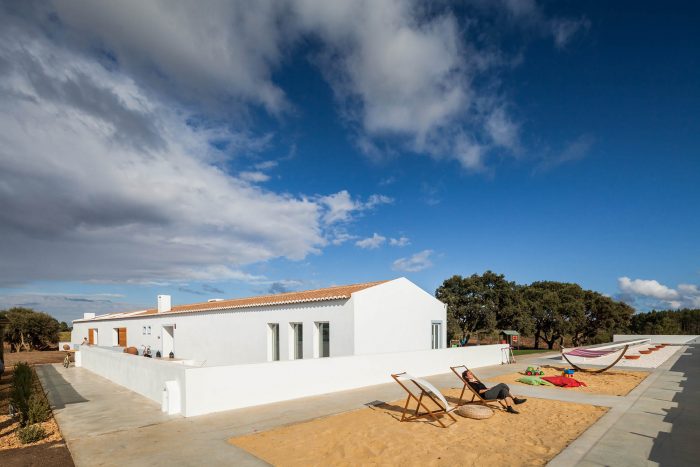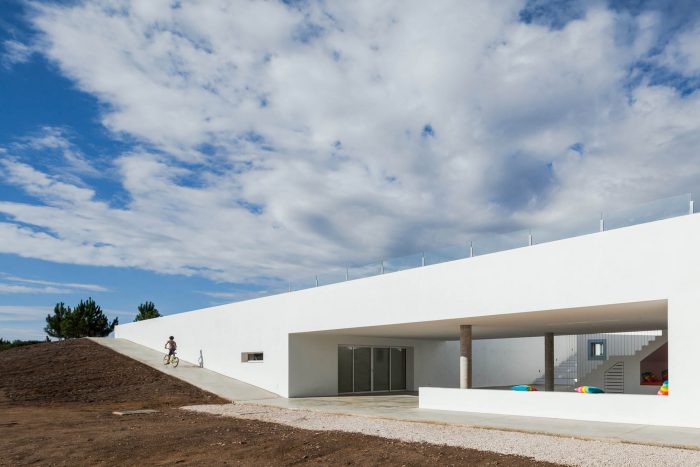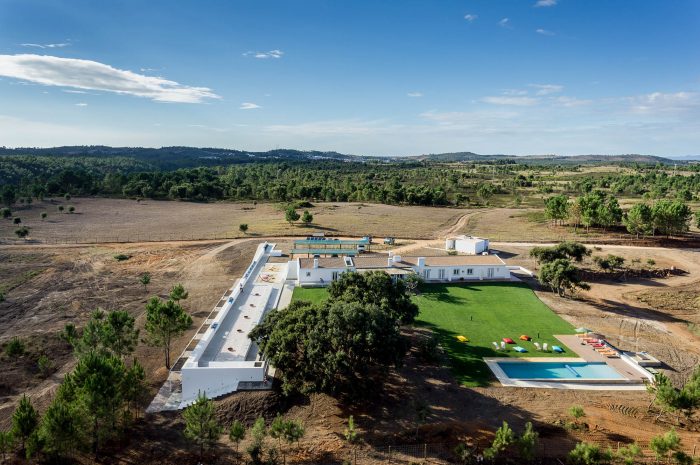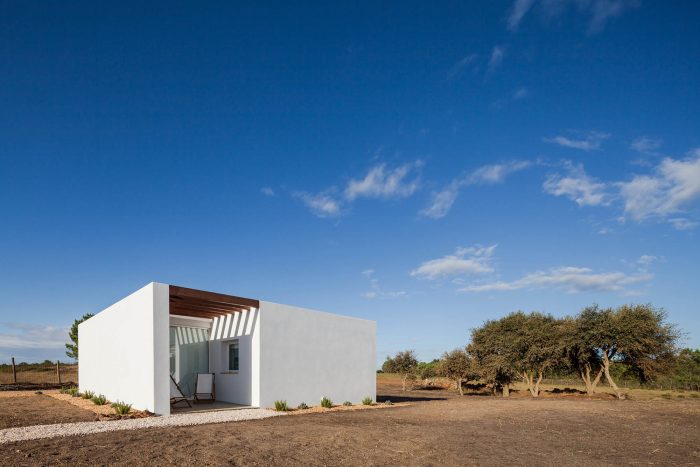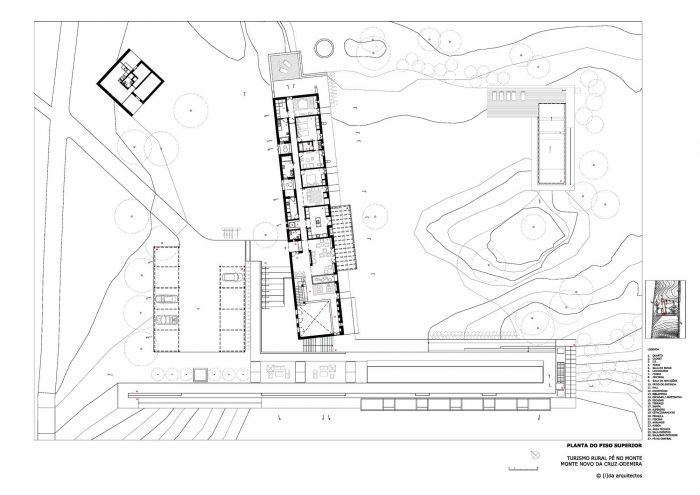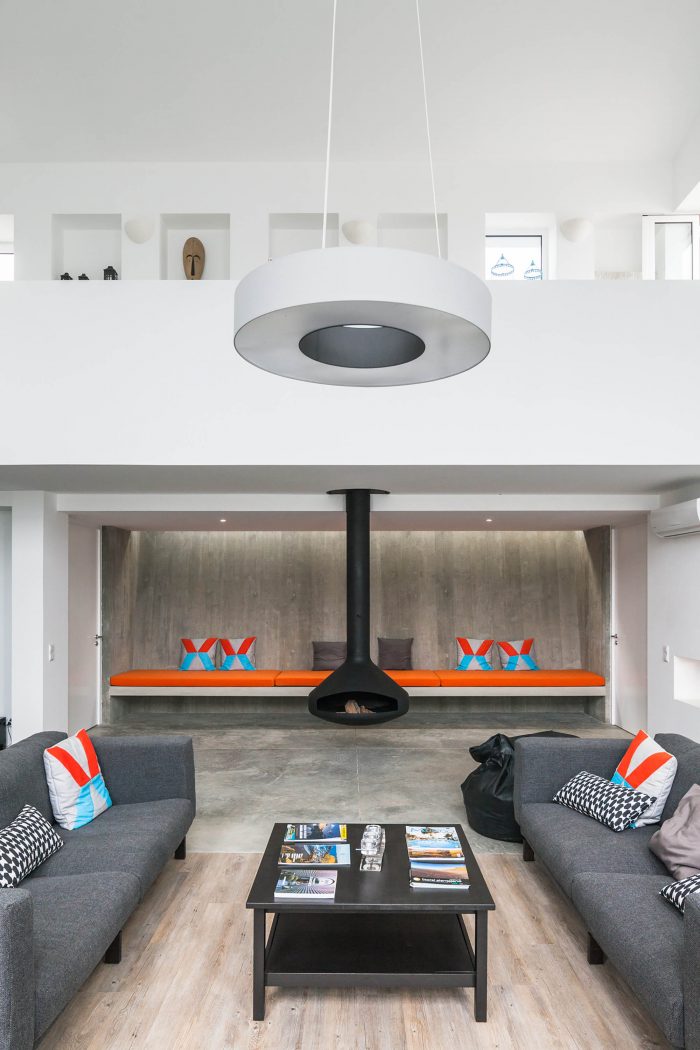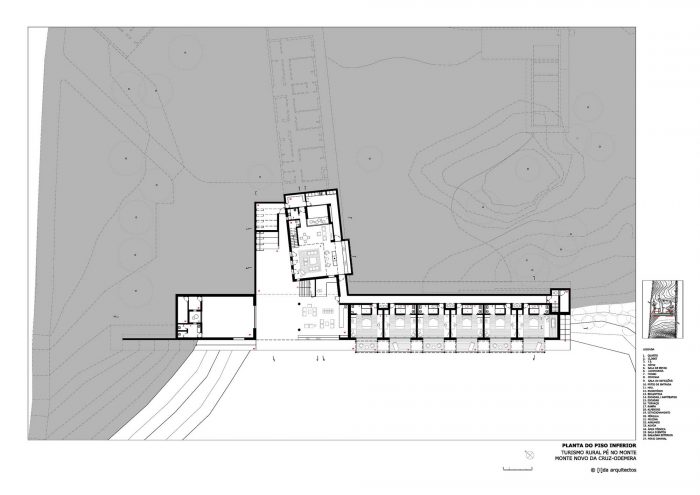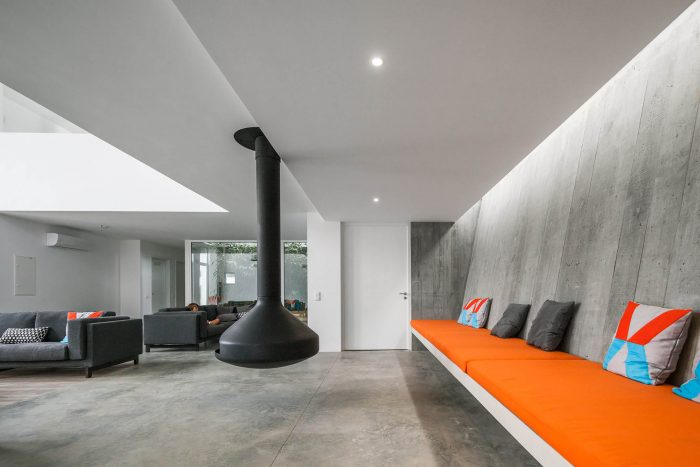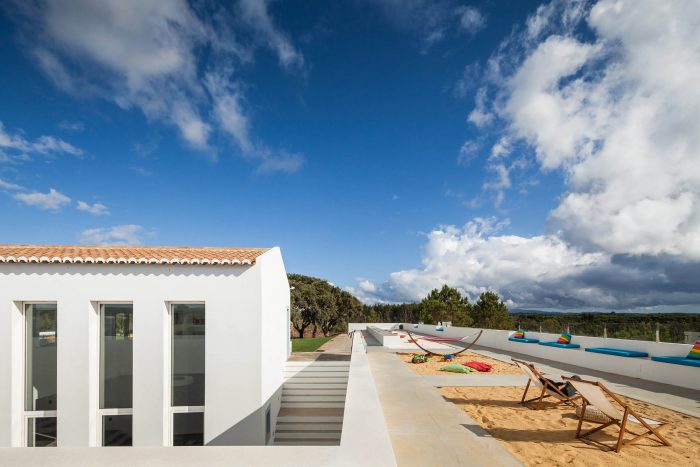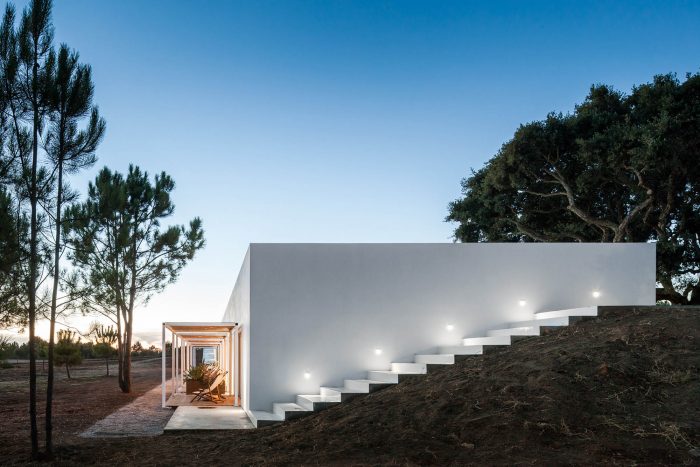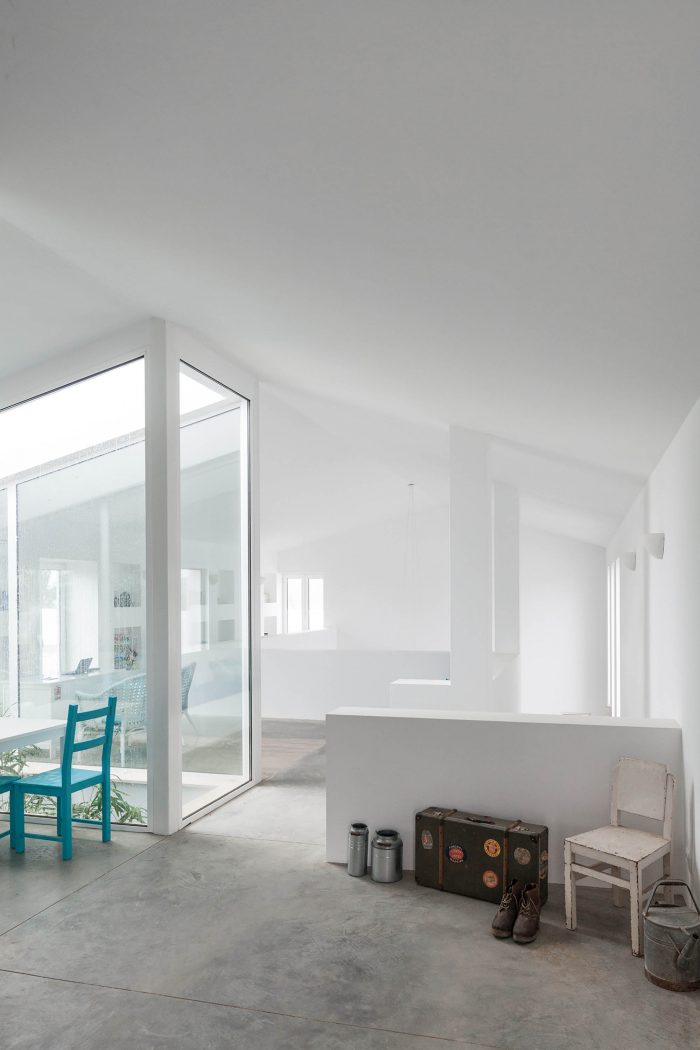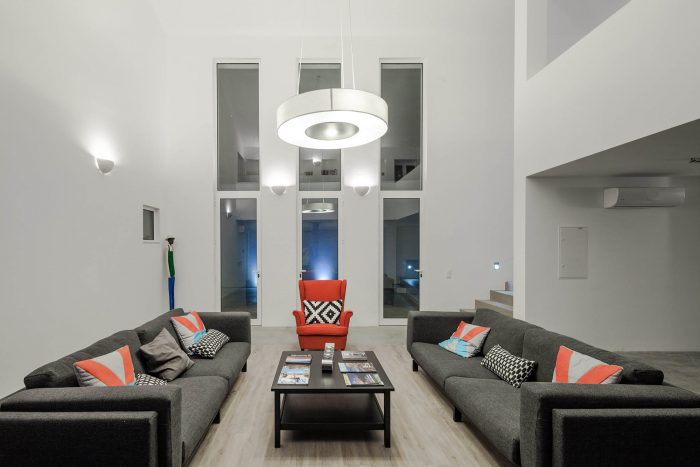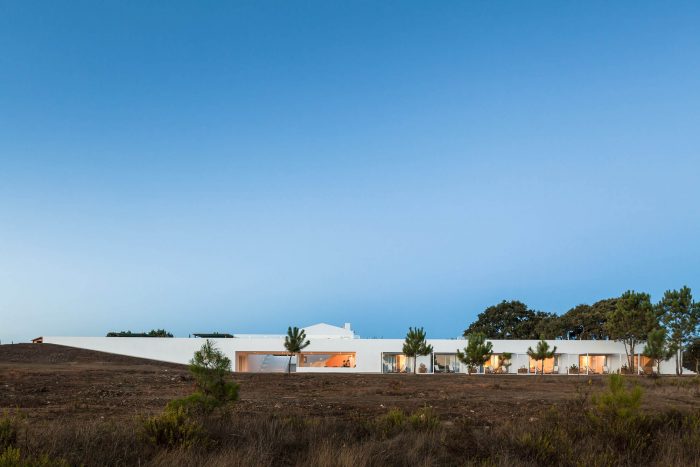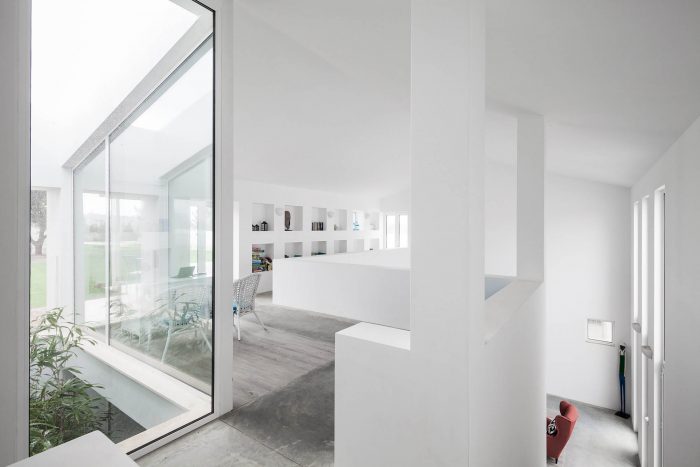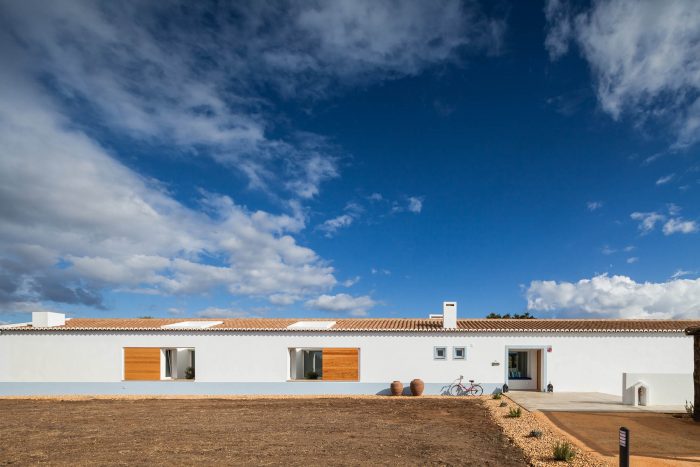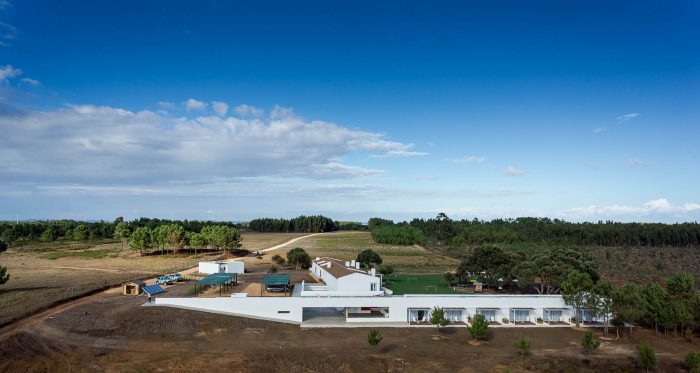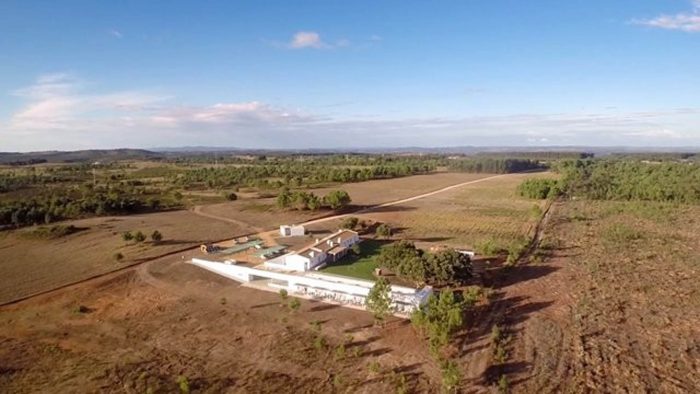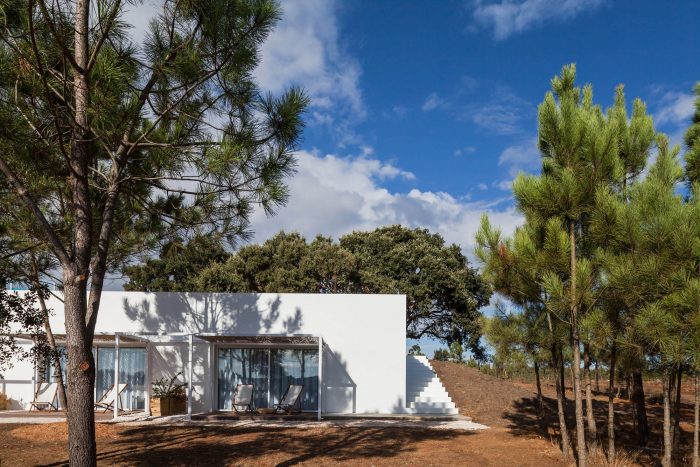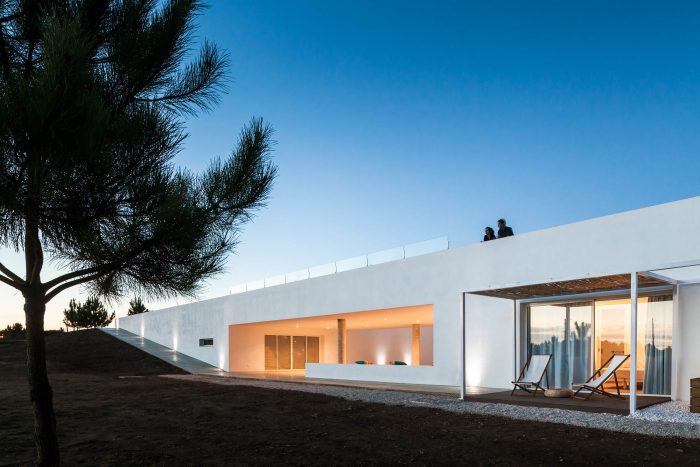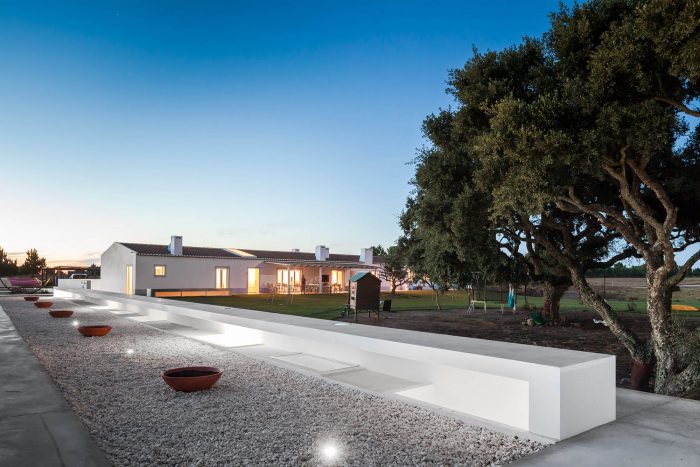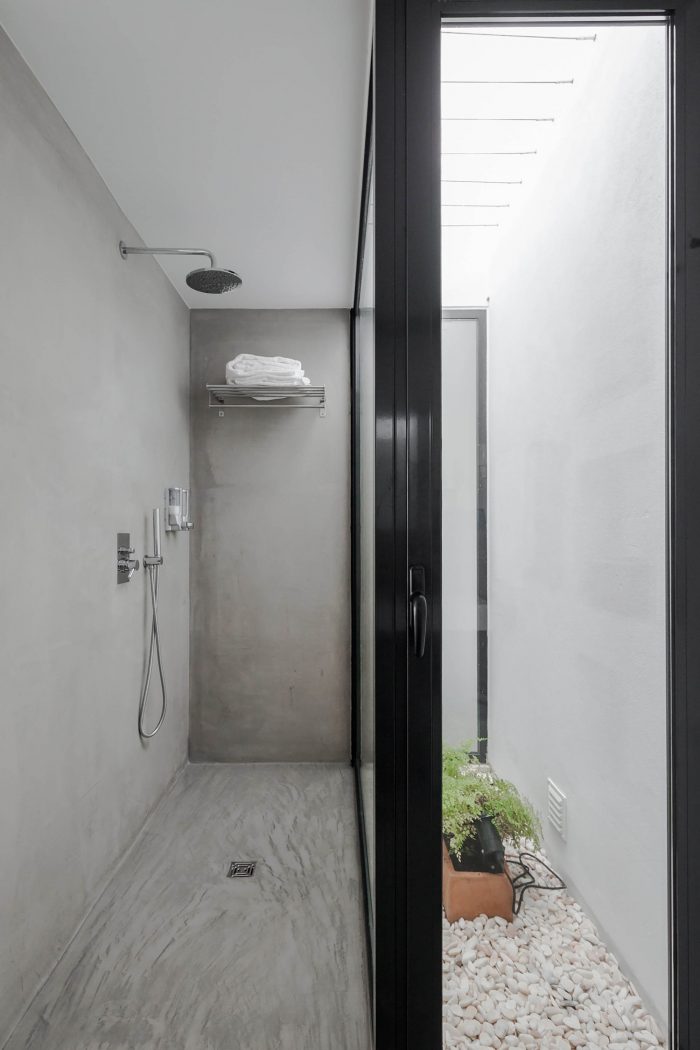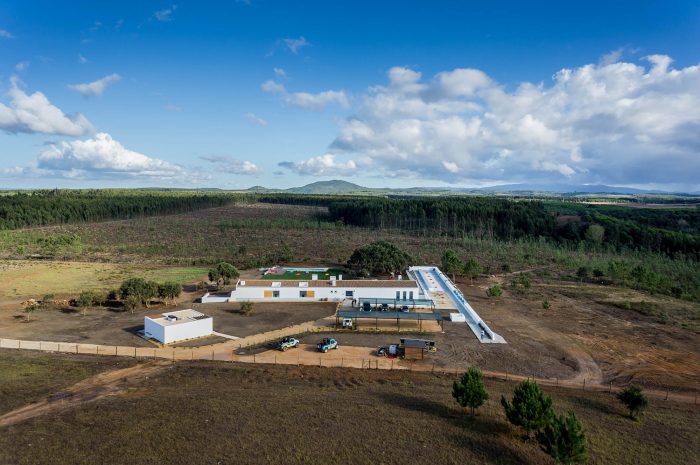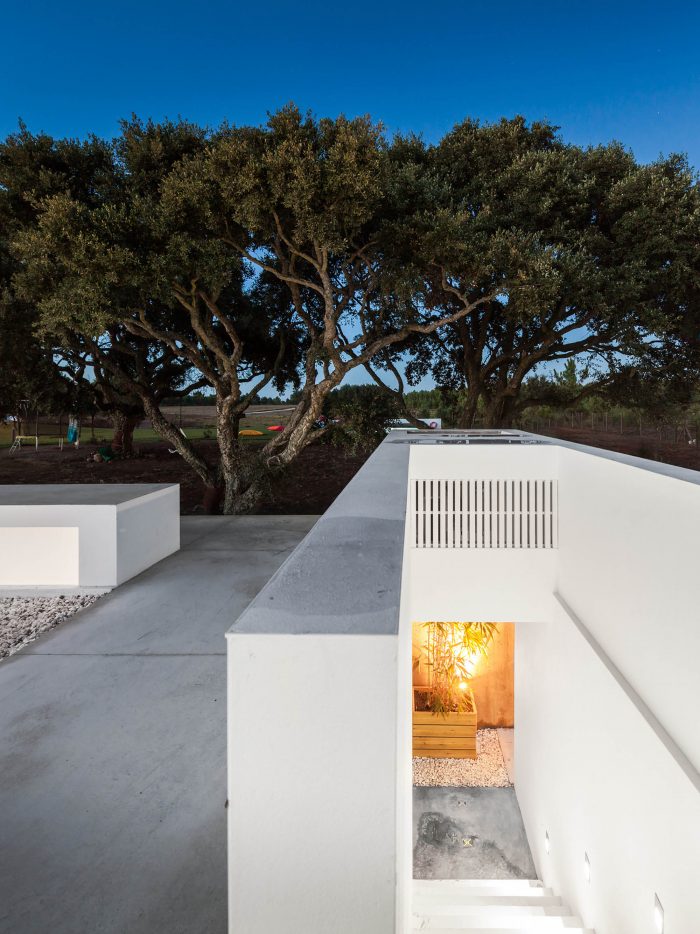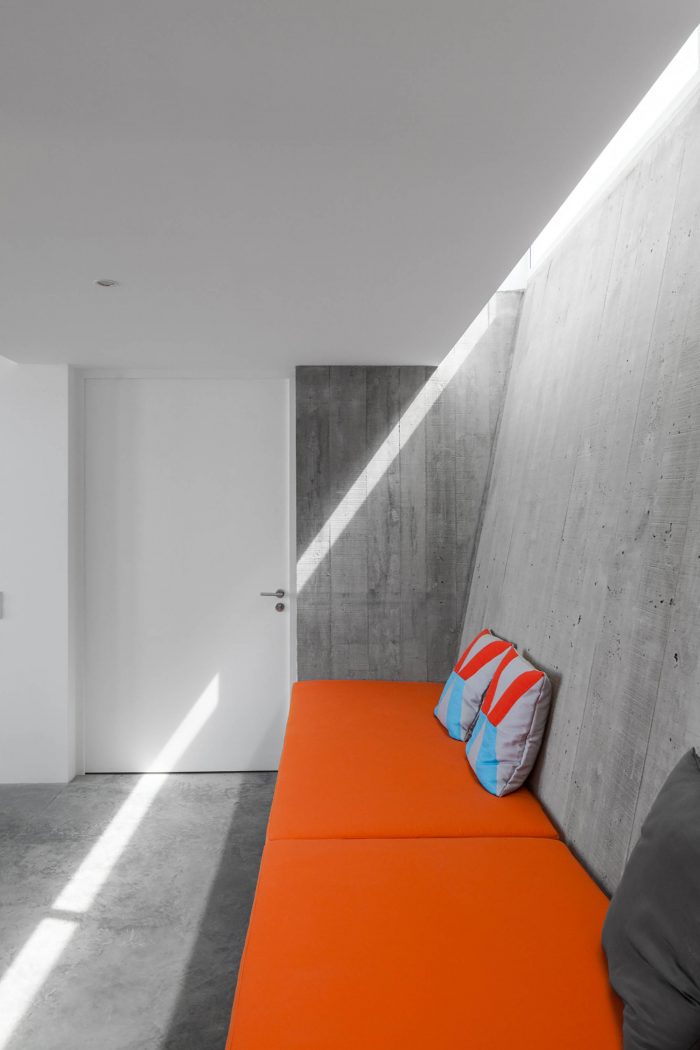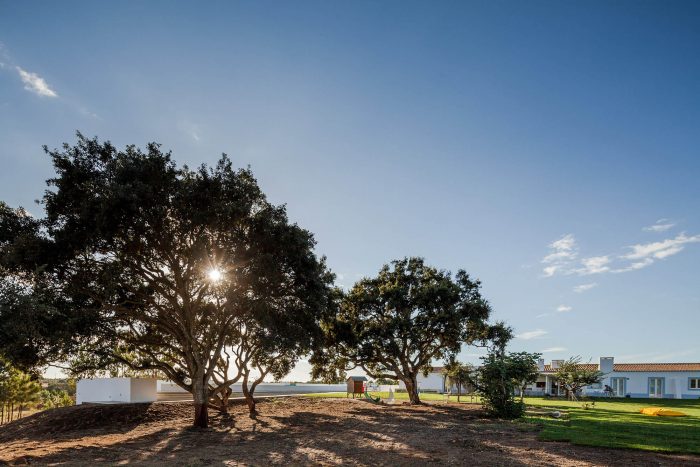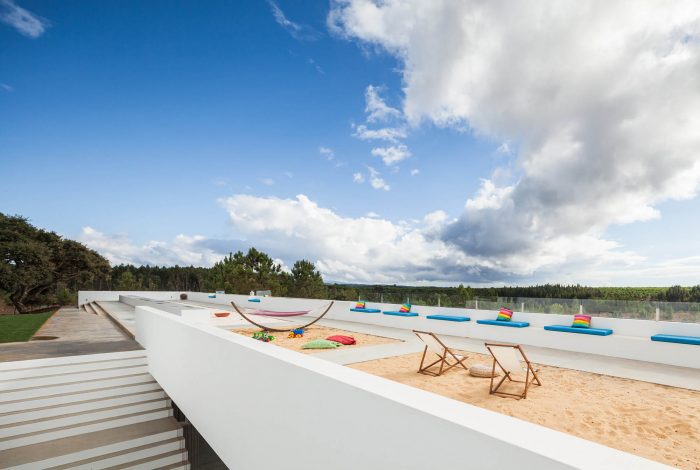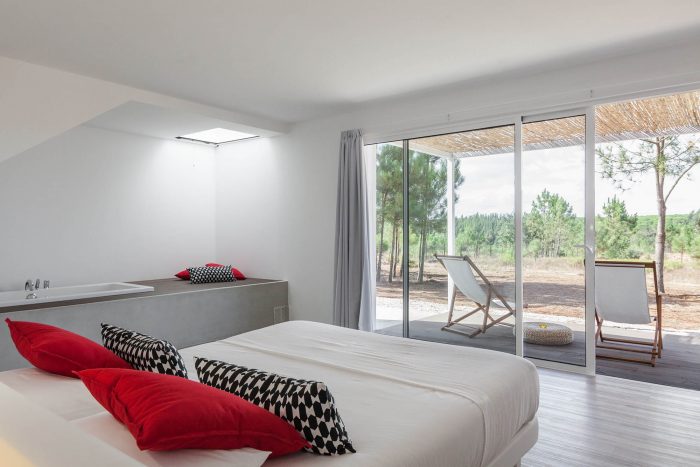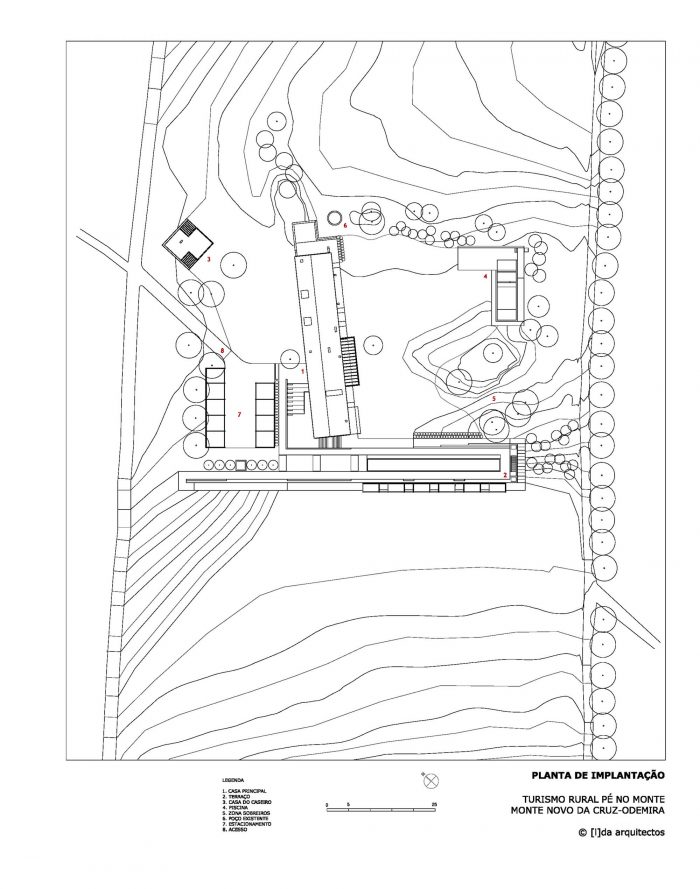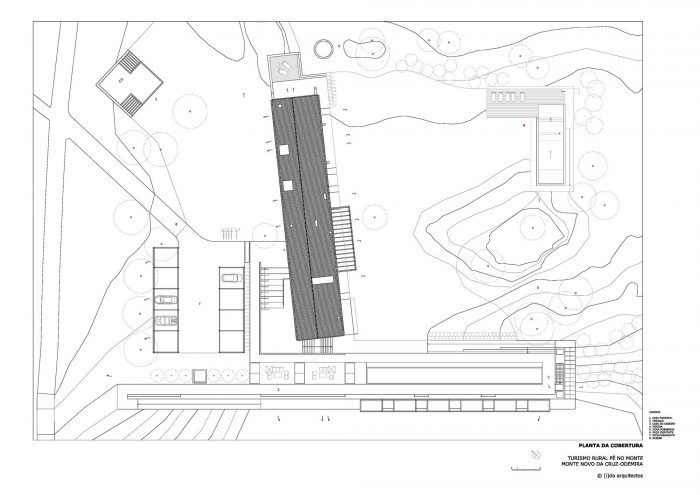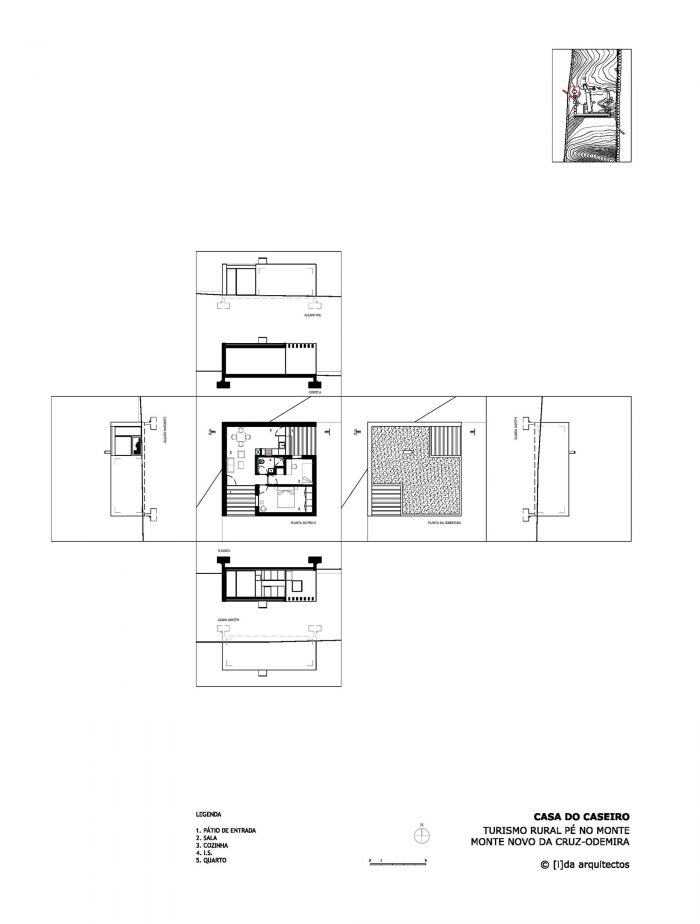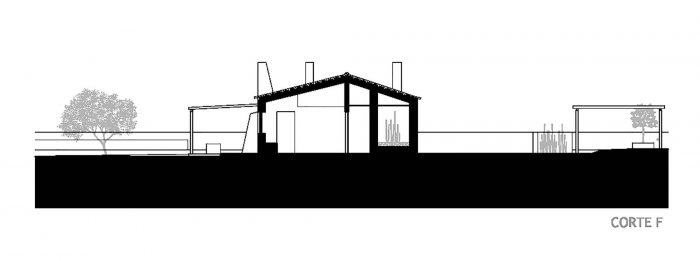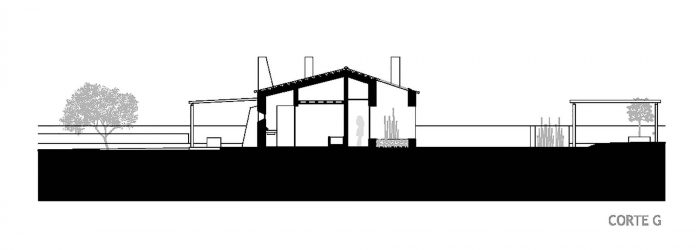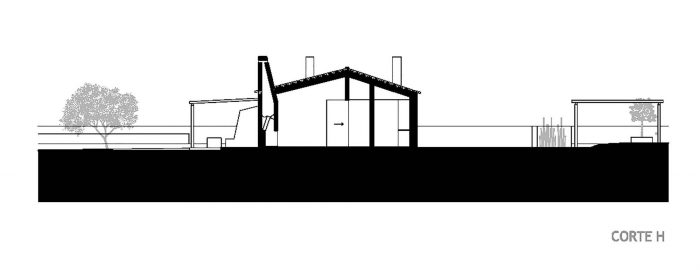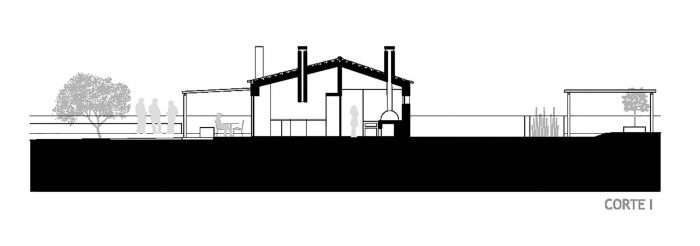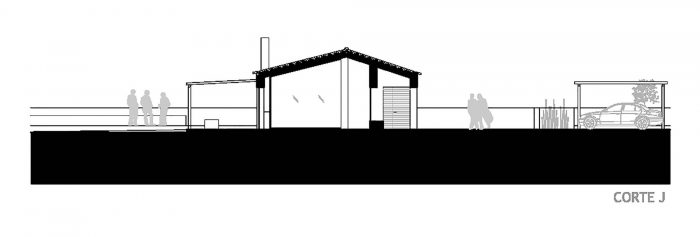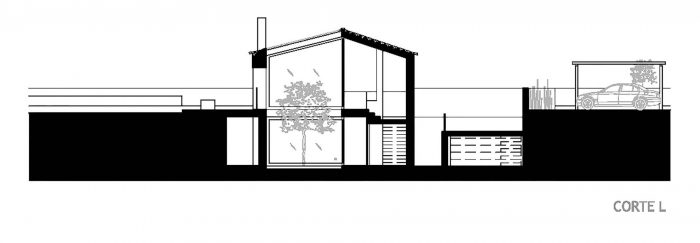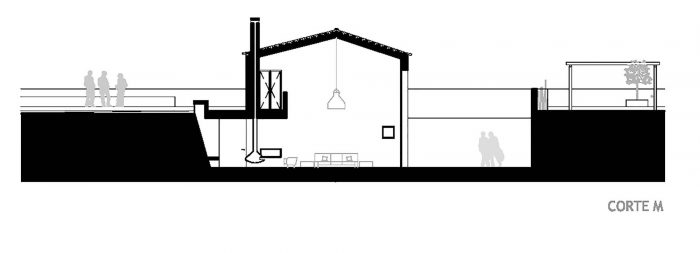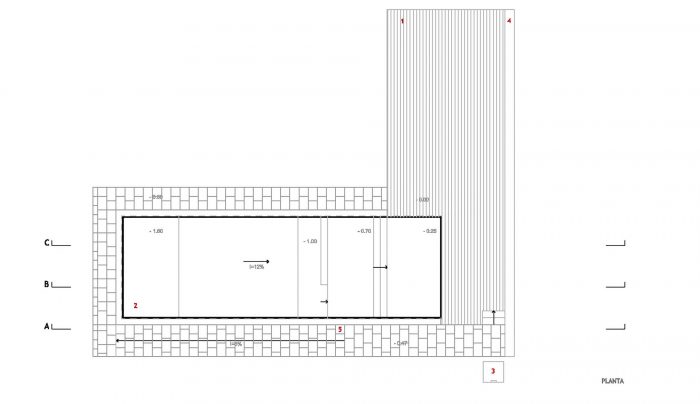位于阿连特茹(Alentejo)海岸的新山(Monte Novo da Cruz)是一个拥有约10公顷土地的农村地产,其特点是土地起伏较平缓,有时会有相关的坡度。庄园东南方向有一圈高大的树木,西南方向的溪流附近有茂密的植被,在景观上十分突出。
Located on the Alentejo Coast, the Monte Novo da Cruz is a rural property with about 10 ha strongly characterized by a gently undulating land with slopes sometimes relevant. The presence of a curtain of high trees along the south-eastern perimeter of the site and a dense vegetation near a south-western stream stand out in the landscape.
在地产中心的高处,有一个古老的农村建筑,由一栋房子和一个小的附属建筑组成,处于退化的状态。这座房子,以及一口石井,一群橡树和一些果树,界定了干预的区域。
In the centre of the property, in a high position, there is an old rural construction, consisting of a house and a small annex in an advanced state of degradation. The house, along with a stone well, a group of oak trees and some fruit trees, define the area of intervention.
该项目的主要挑战是保留原有房屋的突出地位,保持形式和材料的简单性,加强该地的自然特征,同时满足新项目的要求,即农村旅游。
The main challenges of the project were to preserve the prominence of the original house, to maintain the formal and material simplicity, to enhance the natural features of the place and, at the same time, to meet the demands of the new program, a Rural Tourism.
从这个意义上说,新山的提案试图在现有建筑和新建筑之间建立一种对比性的对话,它们有时会相互融合,在过去和现在之间创造一个平滑的过渡。这种关系是通过两种类型的干预来实现的,它们被放置在地面的不同层面上。
In this sense, the proposal for the Monte Novo da Cruz seeks to establish a contrast dialogue between the existing and the new building which sometimes merge with each other, creating a smooth transition between the past and the present. This relationship is materialized through two types of intervention, placed at different levels on the ground:

在上层,干预措施包括恢复和扩大现有建筑作为业主的房子。在尊重原有建筑的实施和特点的前提下,房子被调整以适应新的用途和我们时代的需要。
In the upper level, the intervention consists on recovering and expanding the existing building for owners’ house. Respecting the implementation and characteristics both constructive and typological of the original architecture, the house was adapted to the new uses and needs of our time.
平面构成是由一系列空间组成的,最后是一个带有中央壁炉的双层高的公共休息室。西北侧是主入口和辅助空间–浴室、洗衣房和茶水间–夹杂着自然采光和通风的小花园院子。相反,在东南侧,主要的空间–居住区、卧室、厨房、办公室和图书馆–俯瞰花园和游泳池。在这一侧,外墙仍然很厚,就像挖掘出来的一样,它被纳入了大部分的固定家具,如壁炉、壁橱、橱柜、书柜、桌子和长椅。
The planimetric composition is made up by a succession of spaces, which ends with a double height common lounge with a central fireplace. On the north-west side are located the main entrance and supporting spaces – bathrooms, laundry and pantry – intercalated with small garden courtyards for natural lighting and ventilation. On the south-east side, to the contrary, are located the main spaces – living areas, bedrooms, kitchen, office and library – overlooking the garden and pool. On this side, the outer walls remain thick and, as if excavated, it was incorporated most of the fixed furniture such as fireplaces, closets, cabinets, bookcases, tables and benches.
在下层,干预的结果是一个新的独立建筑,适应场地的地形,利用地面的坡度来区分业主的房子和客人的区域。这个长长的体量,半埋在地下,垂直于树线,保留了房子的规模,加强了植被的垂直度。它独特的立面的特点是一个宽大的开口,框住了景观的视野,以及一个独立的凉棚,减少了直接进入房间的阳光量,并为客人提供了隐私。
In the lower level, the intervention results in a new independent building that adapts to the topography of the site and uses the slope of the ground to differentiate the owners’ house of the guest areas. This long volume, half-buried and perpendicular to the line of trees, preserves the scale of the house and reinforces the verticality of vegetation. Its unique façade is characterized both by a wide opening framing vistas of the landscape as well as by a stand-alone pergola reducing the amount of direct sunlight coming inside the rooms and providing privacy for guests.
在到达的层面上,眼睛几乎感觉不到建筑的存在,只看到一个长长的露台,上面有座位区,供人们沉思周围的自然环境。在这个露台下,我们可以看到私人住宿和公共区域,如一个多功能厅和一个带有酒吧的大型户外生活区域。通往房间的通道是一条长长的走廊,其特点是有一堵裸露的混凝土墙,用传统的木制模板进行施工,还有一系列的天窗,照亮了整个路径。
At the level of arrival the building is almost imperceptible to the eye, only a long terrace with seating areas for contemplation of the surrounding nature is visible. Under this terrace we find the private accommodations and common areas such as a multipurpose room and a large covered outdoor living area with a bar. The access to the rooms takes place via a long corridor characterized by the presence of an exposed concrete wall, performed with traditional wooden formwork, and a series of skylights that illuminate the entire path.
两个体量之间的联系是通过一个中央庭院发展的,它是整个建筑群的核心。它是由它来组织不同部分的分布和访问。通往上层的楼梯/礼堂和三个超大的垂直窗户,揭示了公共休息室的幅度,在这个院子里脱颖而出。
The connection between the two volumes is developed through a central courtyard, the heart of the whole complex. It is from it that is organized the distribution and access to the different parts. The staircase/auditorium that leads to the upper level and three oversized vertical windows that reveal amplitude of the common lounge stand out in this courtyard.
该项目还包括一个小型看守所。在通往建筑群的路上,这个8.40×8.40米的方形房子标志着通过两面盲目的白墙将我们带到中央庭院的入口。与外界的联系仅由两个有阴影的入口院子完成,确保了通往业主房屋入口、菜园和停车场的良好视野。
The project also includes a small caretaker’s house. Along the way to the complex, this square house with 8.40×8.40m marks the entrance through two blind and white walls that lead us to the central courtyard. The contact with the outside is done only by two shaded entry courtyards that ensure good visibility to the owners’ house entrance, vegetable garden and parking.
混凝土路面和白色石膏墙是整个建筑群的主要材料。
The concrete pavements and white plaster walls are the predominant materials of the entire complex.



Architects: [i]da arquitectos
Area: 820 m²
Year: 2014
Photographs: Joao Morgado
Structural Engineering:Marco Agostinho
Consultants:Matriz XXI Engenharia
Landscape:2arq – arquitectura e exteriores
General Contractor:Regulconcrete construcao civil e obras publicas
Architects In Charge:Ivan de Sousa, Ines Antunes
Project Leader:Ivan de Sousa
City:Odemira
Country:Portugal


